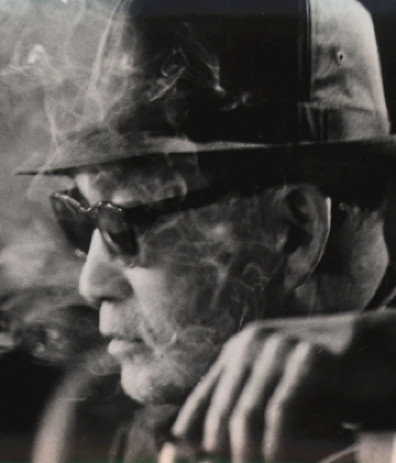
The Father of Japanese Visual Effects: Eiji Tsuburaya!
Alright, that might be overdoing it, but as an old friend of mine, Spencer Coppens, used to punctuate his hysterical nightclub managing accounts, "Who knew?" When I was researching and writing EIJI TSUBURAYA: MASTER OF MONSTERS, I knew that it would be immediately embraced by fans of Japanese Monster Movies, Asian Cinema and Classic Fantasy/Horror/Science Fiction Films, a voracious, but very niche, demographic. Even a year ago, I would have never imagined the volume of mainstream attention — and accolades — that the book has generated outside of the unfortunately labeled, "Fandom Ghetto," in the wake of its release.
Positive notices have been pouring in since last fall, from The Library Journal and Locus Online to Barnes & Noble and Time Magazine. (Time Magazine? Somebody pinch me!) Most of them unanimous in their praise for the book itself and it's mission — to bring Eiji Tsuburaya into the international spotlight. I was also taken aback that it was nominated for a coveted "Rondo Award," and all of the book signings (so far) have surprised not only me, but the managers of the venues as well. It's all about timing, and it has been extremely fortuitous — right now, people are interested in reading (and hearing) about Tsuburaya's films, as well as his life, achievements and innovations.
The door has finally been opened — and the reviews keep coming in. Chelsea Bauch, in the June 2008 issue of Boldtype ("The Monthly Review of Books Worth Reading"), has kindly written:
"Ragone's account is an insightful look at the innovation and technology behind one of the industry's pioneering craftsmen. Tsuburaya is still widely honored in Japan, but his international recognition is often eclipsed by his iconic creatures... And yet, as Ragone tells it, the story behind their construction is as engrossing as their infamous acts of destruction... MASTER OF MONSTERS is part biography, part coffee-table art book... balancing Ragone's absorbingly detailed account with stunning images of the man in action... Although the subject matter may seem esoteric, Tsuburaya's story is as much about the evolution of Japanese cinema as it is about one of its most pivotal practitioners."
That has been my mission — to shine a beacon onto Eiji Tsuburaya and let people be drawn to that light (no Mothra puns intended or implied). It didn't have to be me, but somebody had to do it. This is the first major step in a long journey and has been a culmination of years of dedication on my part. After decades of reading mostly snide, dismissive and condescending comments in English-language publications on Visual Effects and Science Fiction Films (some bordering on racist), with others being erroneous (because of the language barrier or lazy research), or passing him over altogether (some out of ignorance or distain), Eiji Tsuburaya can no longer be swept under the rug, and is now getting his due outside of the confines of his birthplace (where he is still widely respected and revered by filmmakers and fans, alike).
His was the first name that stuck to my pre-adolescent grey matter, when I read the TV Guide listing for the sadly-titled ATTACK OF THE MUSHROOM PEOPLE (1963), which ended with, "Special Effects by Eiji Tsuburaya." This was the start of my lifelong obsession to discover more about the reality outside of the narrative of the movies themselves — the people behind the cameras and how the films were made — and put them into context. After that initial epiphany (in a long succession of them), the next boot in my arse came from an article on Tsuburaya in #110 of Famous Monsters of Filmland magazine, featuring some amazing behind-the-scenes production stills (one of which I made sure got into the book). My fate was sealed.
But, this is not about me. It never has been; I'm merely the vessel — it's all about Eiji... and it's about damned time.
For a sample of more reviews, as well as announcements of upcoming book signings and film screenings, please visit the official MySpace page for Eiji Tsuburaya: Master of Monsters






































4 comments:
No disrespect intended but when it comes to all the kudos your book has deservedly generated, all I have to say is: Well, DUH!!! That book was quite obviously a labor of love and that sentiment flows from every page, so I hope to see you channel your enthusiasm for this stuff into another volume, maybe a comprehensive illustrated guide to kaiju cinema in general. While there are a few such books available in English very few of them — if any — are on par with your book, and I'd like to see a book that conveys the fun of the genre as a whole for those who believe in the first place and for the younger generations just discovering and enjoying this stuff despite the best efforts of a film industry that seems bound and determined to provide as little real imagination in its entertainment as possible.
And are there any plans for book signings in NYC? If so, sign me up!
Thanks for the very generous comments, it's much appreciated. In regards to a companion book, we'll see what the future holds...
As for an NYC signing, we're working on coming out to the East Coast, so stay tuned!
Best,
August
Righteous!
Very cool! Tsuburaya found a voice in America.
Post a Comment